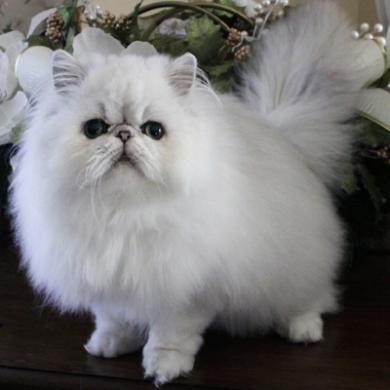 SKC Films Library SKC Films Library |
|
|
| SKC Films Library >> Agriculture >> Animal Culture >> Cats |
 Persian Persianone of the "original" cat breeds The exact origins of the Persian breed are unknown, but hieroglyphic references to similar-looking cats in the Middle East date back to as early as 1684 B.C. The most common story surrounding the breed's introduction to Europe says that Italian nobleman Pietro della Valle purchased four pairs in a Persian bazaar in 1620 and brought them home. Sailors, travelers, and merchants also carried Persians with them from the Middle East to the Continent. The Persian was one of the breeds showcased in the world's first organized cat show, in 1871 at the Crystal Palace in London, England, and a Persian kitten won the very first "Best in Show" award. The breed was brought to the United States sometime after 1895, and was one of the first breeds registered by the Cat Fanciers' Association upon its formation in 1906. Persians come in a range of colors and color patterns -- from tortoiseshell and calico to orange, grey, and black-and-white -- but white and silver are the most popular (the cat in Fancy Feast commercials is a white Persian). The body is short but thick, with thick legs and a short, thick neck. The tail is short and the ears are small. The head is round with large, round eyes. The familiar, and popular, "flat face" is actually a recent feature, being introduced via a genetic mutation in a single litter of kittens in the 1950's. Breeders fell in love with the look almost immediately and selective breeding soon made it a breed standard. Persians are most at home where peace and quiet prevail, but, with love and attention, can easily adapt to the most boisterous of households. They love to play, but can become lazy if not regularly stimulated by their owners. Unlike some cat breeds, the Persian generally takes being left by itself in stride, quite willing to spend its day laying in a favorite window or chair while its owner is away, and then becoming a very lovable companion and friend upon the owner's return. Also unlike many breeds, the Persian prefers to stay close to the ground and is not given to high jumping and climbing.
WEB SOURCE |
| SKC Films Library >> Agriculture >> Animal Culture
>> Cats This page was last updated on 04/11/2017. |